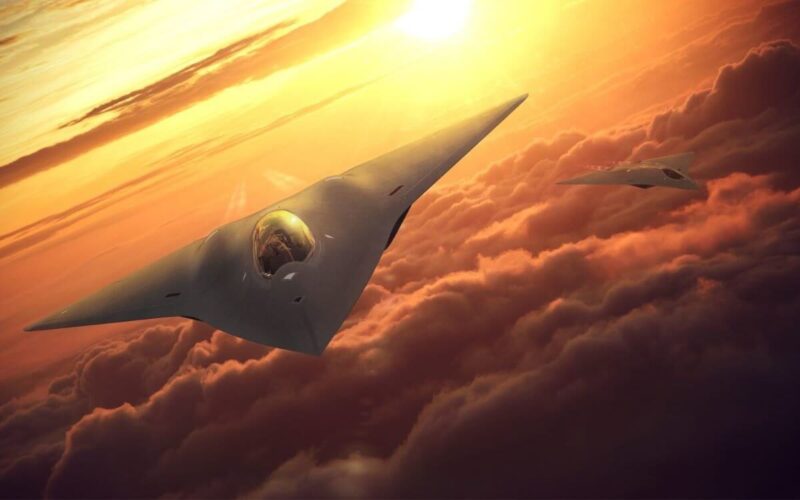The past few days saw quite a lot of talk on the topic of naval air power, as United States Navy (USN) top management offered a glimpse of their vision of what kind of aircraft could be expected on the decks of US aircraft carriers in the nearest future.
This vision is a further refinement of the Navy’s long-running effort to find a replacement for the current fleet of carrier-borne aircraft. For all intents and purposes, it revolves entirely around the 6th generation fighter jet to be developed under the Next Generation Air Dominance (NGAD) program, with a focus on unmanned aircraft emerging in an evolutionary instead of revolutionary manner.
Presented by the director of the Air Warfare division of the Office of the Chief of Naval Operations Rear, Admiral Gregory Harris, on March 30, 2020, this is probably the clearest view of what the USN is doing with its developments so far. While in tune with the ideas that have been revealed in the past couple of years, it presents at least several new and exciting insights.
Evolving concept
The story of the US Navy’s (USN) next-generation fighter jet development is a long and complicated one. Its first traces could be found in 2008 when the Navy identified a requirement to have a new plane by the 2030s.
The logic behind that decision was clear. F/A-18E/F Super Hornets would be nearing the end of their service life by then and the F-35C would be a two-decade-old platform, with a need to at least supplement it with something newer. The end of the first decade of the century also saw fifth-generation jets losing their allure, as the talks of ending the production of the F-22 began, and the cost of the Joint Strike Fighter program was skyrocketing.
Lockheed-Martin and Boeing were already demonstrating the first concept art of what the next generation could look like: streamlined, stealthy flying wings without vertical tail surfaces, an image that stuck and is commonly used to refer to 6th generation fighter jets to this day, despite being barely anything more than artist’s impression.
The name, F/A-XX, got closely attached to it too. It was cemented by the Navy’s request for information in 2012 and further remarks by USN officials on requirements that presented the new fighter as an optionally manned platform with less emphasis on stealth and maneuverability, and more of a focus on networking and advanced weaponry.
This program should not be confused with the current one. The F/A-XX, as it was defined in the early 2010s, disappeared by the middle of the decade, getting overshadowed by various programs to develop carrier-borne unmanned aircraft at first, and completely replaced by the NGAD later.
While the Navy’s NGAD is related to the US Air Force’s program of the same name, they are separate developments. The USN completed their study into requirements for the next generation fighter jet in 2019 and attached the old designation to the prospective aircraft that would answer those requirements.
The new F/A-XX
The timeframe of the new development remained the same. At its core, the goal of the program is to procure a replacement to the F/A-18E/F fighter jet before it reaches the end of its service life, finding a replacement for the EA-18G Growler electronic warfare aircraft and supplementing the F-35C in the process.
In addition to that, the Navy would also look to replace the E-2 Hawkeye – the early warning platform which is at this point over half-a-century old and has reached the end of its potential for improvements.
Harris’ remarks hint that the F/A-XX could be an answer to all three problems, becoming a centerpiece in the system of systems – or as USN refers to it, a family of systems. According to the general, so far, two efforts into its development are pursued – one for a fighter jet and another for electronic warfare aircraft, likely resulting in two basic variants that could have further modifications.
This shows that the F/A-XX will, likely, not become an early warning platform, delegating this role to some other aircraft. It also reveals an emphasis on the manned aspect of the jet.
The idea for the F/A-XX to be “optionally unmanned” was the only one that differentiated the early visions of this aircraft from the 5th generation jets, and while the program evolved, such an idea is still not discarded. Harris referred to the F/A-XX as “most likely manned”, which shows that the idea of building a drone on the basis of the jet is still on the table.
Yet, the brunt of the USN’s unmanned capability would be a prerogative of another platform. Harris referred to it as “little buddies” – a rebranding of “loyal wingmen”, an informal term for low-cost drones designed to accompany expensive fighter jets.
Buddies
The USN does not participate in the USAF’s Skyborg program and has not revealed an intention to buy any form of such drone. But its ambition in this regard is nothing but grand.
According to Harris, the Navy is looking at a 40/60 unmanned-manned split by 2030, with an intention to reverse the proportion in several subsequent years. This means that “little buddies” would dominate future aircraft carriers.
They would also be the primary reconnaissance and early warning platforms, taking over E-2’s position and likely changing the way the Navy uses its airborne early warning (AEW) capabilities. The only problem standing between the USN and this vision is the challenge of manned-unmanned teaming, something the USN is hoping to perfect with the Boeing MQ-25 Stingray refueling drone.
All of these developments, on one hand, show the convergent evolution of the world’s air forces, being remarkably similar to visions presented by both USAF and UK’s Royal Air Force.
On the other hand, it quite clearly shows that the age of manned fighter jets is still far from over.

